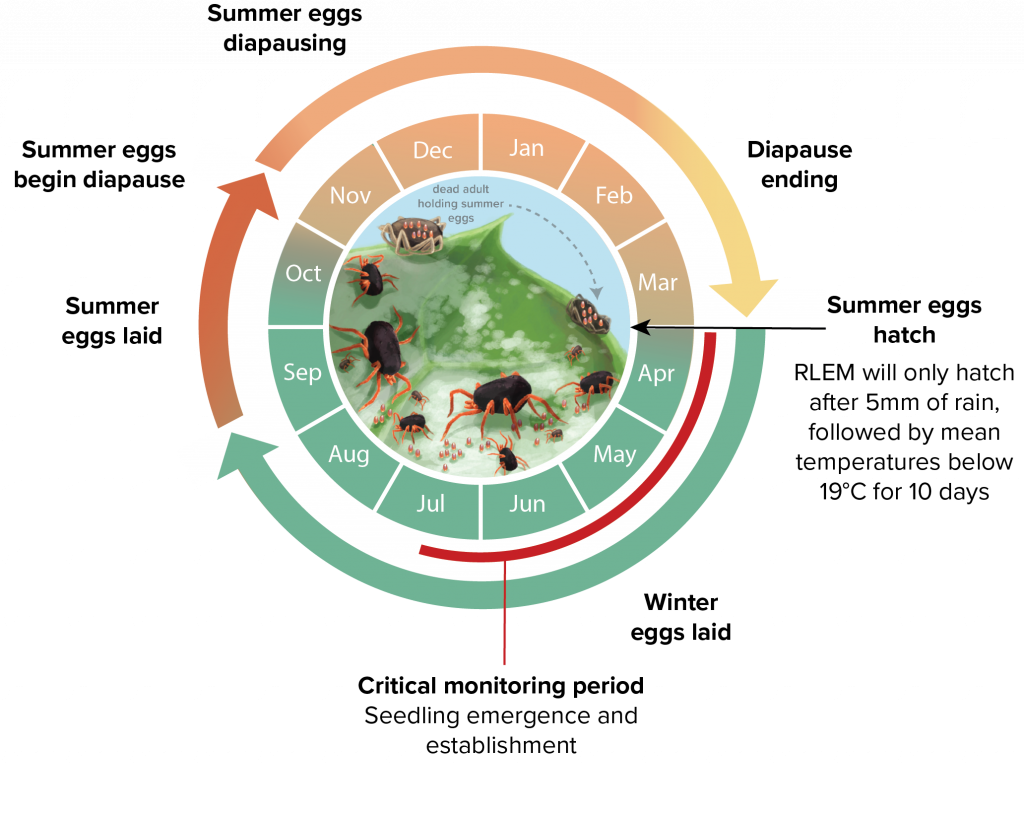The hatching of the redlegged earth mite (RLEM, Halotydeus destructor) is tuned to temperature and rainfall events in late autumn and winter when winter crops are establishing.
Research by cesar’s Dr Garry McDonald suggests that the process of egg development in autumn requires at least 5 mm of rain accumulated over five consecutive days or less, followed by 10 days of average daily temperatures remaining below 16°C.

Autumn predictions
We have used recent rainfall and temperature data to run a prediction model to see if peak redlegged earth mite egg-hatch is imminent in south-eastern Australia.
According the predictive model, April has largely been too warm for egg-hatch in south-eastern Australia. Furthermore, while some areas have satisfied this rainfall requirement for egg-hatch (e.g. Wagga Wagga, Albury), other areas have not (e.g. Victorian Mallee).
Please be aware that the predictive model provides a guide only. Redlegged earth mite may hatch earlier than anticipated.
For example, it is not uncommon to hear of redlegged earth mite sightings before predicted dates in irrigated paddocks.
We will continue to monitor temperature and rainfall data in key locations across south-eastern Australia and provide updates on redlegged earth miteegg hatch.
Other mites could be around
While redlegged earth mite are still expected to be dormant, there are other mite pests that you may find in your surroundings that also have dark bodies and reddish legs.
Recently, Bryobia mites has been found attacking establishing canola in southern NSW.
While redlegged earth mite have a round, velvety black body, Bryobia mites are flattened ‘pie-dish’ shape body with distinctively long front legs.
Unlike redlegged earth mite, Bryobia mites prefer warmer conditions.
For more information on mite identification in broadacre crops and pastures see the GRDC Crop Mites Back Pocket Guide.
Cover image: Photo by Andrew Weeks, Cesar Australia





